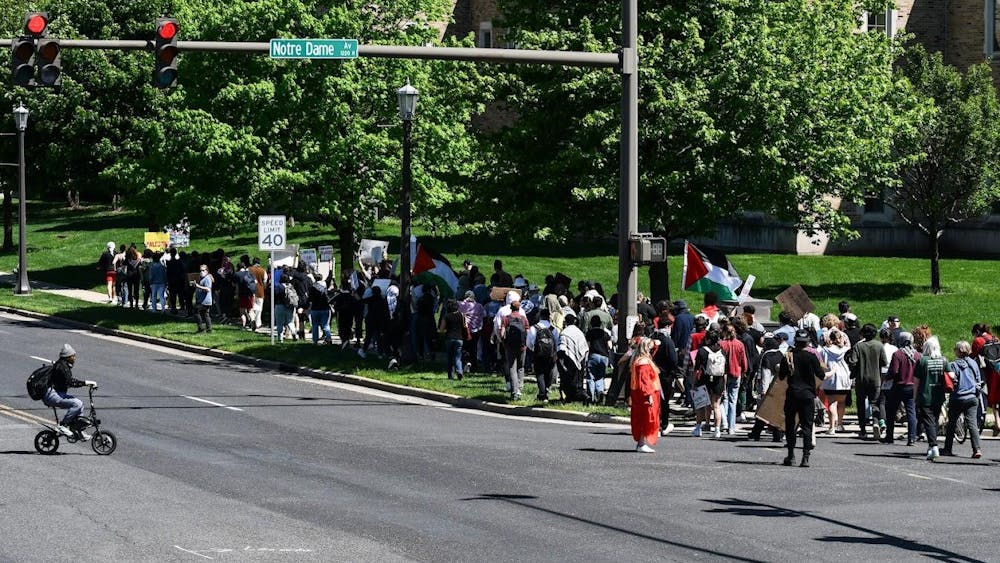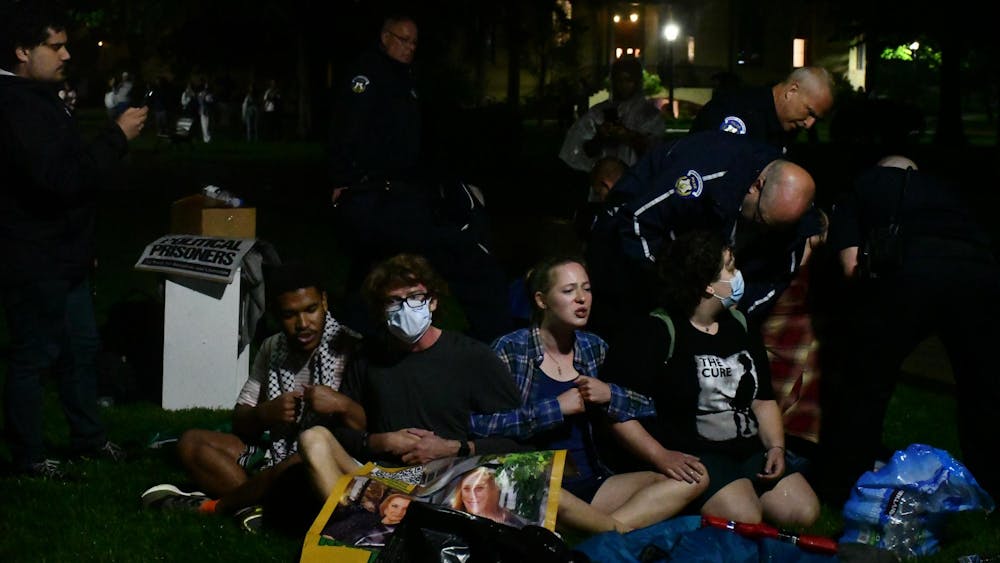Acclaimed photographer Stephen Wilkes presented an array of his photographs at the Snite Museum on Wednesday as part of the museum's Artist Talk series.
Wilkes presented his new photographic series “Day to Night,” a series of large-scale, time-lapse panoramas from locations such as Jerusalem, Times Square, the Eiffel Tower and the Washington Mall. Wilkes’ panorama “Jerusalem” was featured in the Snite’s Scholz Family Collection from April 14 to April 22.
During his talk, Wilkes discussed how he develops the large scale panoramic photos for his series. The process requires positioning himself more than 50 feet above his subject on a crane and consists of more than 15 hours of work, Wilkes said.
“I take these views, views that I call part of our collective memory, and what I do is photograph for 15 hours on average. I shoot between 1500 to 2000 images of which I edit down to the 50 best moments from day to night and they seamlessly get blended together into one single photograph.
“I realized I stepped into something: the concept of changing time in a single photograph,” Wilkes said.
In addition to his “Day to Night” series, Wilkes also presented some of his earlier work, including his signature series on New York’s Ellis Island and Pennsylvania’s Bethlehem Steel Factory, and described his growth throughout his photographic career.
Wilkes reflected on an early series, “California One,” which documented northern and southern California. Wilkes said “California One” was one of his first in-depth studies of a location. He developed his techniques in panoramic photography during this project, yet used the panoramic style to capture a more personal perspective, as opposed to the traditional landscape technique, Wilkes said.
“Most people were using [panoramic photography] at the time as a very wide landscape thing," Wilkes said.
“I decided I wanted to do portraits with it and be more intimate with it.”
Several of Wilkes’s series, such as “Ellis Island” and “Bethlehem Steel Mill,” focused on abandoned structures that reflected important events and places in American history.
Wilkes’ assignment at Ellis Island became a five-year project that deeply connected him to its history, he said. He focused on several of the abandoned medical buildings and psychiatric wards around the island and came to realize the buildings possessed a distinctive energy, Wilkes said.
“One thing about photographing for me is usually I see something and it's either I live in the moment, I capture it, or I say, ‘This is fantastic, but I’m going to come back tomorrow morning and the sunlight’s going to be perfect,’” Wilkes said.
“Ellis Island didn’t work that way — the act of discovering and the act of photography happened simultaneously, consistently. It was as if the best moments were shown to me and I photographed right when I saw them,” he said.
“It was fascinating to shoot what you think are these inanimate objects in an architectural sense, but yet there is somehow history in the light of the room — there’s an energy.”
Wilkes said themes he adopted at the beginning of his career as a photographer are still reflected in his current work. Some of the prominent themes of his early photography, such as his work in street photography and the presence of light and color, are still an integral part of his work today, Wilkes said.
“That’s the fun thing about photography — the fun things that attracted you in your earliest stages of development stay with you,” Wilkes said. “They just evolve.”













